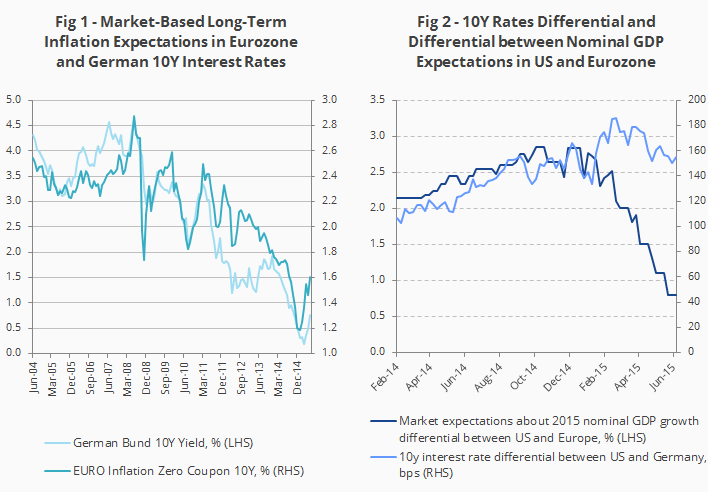German yields have been on a rollercoaster in the past few months polarizing the investment community regarding the outlook for the rest of the year. On the one hand, the ECB’s quantitative easing program is a powerful tool that will anchor German yields for the foreseeable future.
However, anchoring rates at a low level is not tantamount to preventing a gradual upward adjustment, especially if the European QE succeeds in reflating longer-term price expectations (Fig 1). What is important from the US perspective is that the ECB policy anchor can keep the interest rate differential between Europe and the US artificially wide (relative to fundamentals such as relative nominal GDP growth expectations – Fig 2). This can limit the USD downside in the run-up to the Fed’s first policy rate hike despite lower US nominal growth expectations.

Source: Van Eck Research, Bloomberg
Get the latest news & insights from MarketVector
Get the newsletterRelated:




